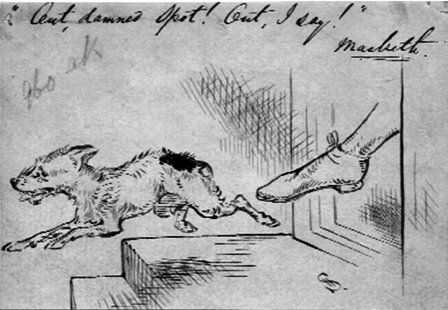
SANDERCOCK |
Philip Sandercock (1802-1883) was the village schoolmaster, postmaster and parish clerk. He was a well respected member of the community. All Philip's children were born and baptized in North Hill. Read more ...Henry Sandercock was born in 1833 and the second of Philip's eight children. Henry was baptised on 24th February 1833 in St Torney's church and lived with his parents at the School House, next to what is now The Racehorse Inn. In his teens Henry took up a position as an accountant at the office of a copper mine in Redruth. His talent, though, lay in his ability to paint and draw and by 1861 he had foresaken accounting in favour of being an artist. On the census of 1861 he was visiting Trescow Farm in St Mabyn, the home of Thomas and Jane Olver (nee Sobey). Living there at the same time was Henry's future wife Elizabeth Sobey, sister of Jane. Henry and Elizabeth married in the spring of 1862 in St Andrew's Church in Plymouth and the newspaper reports give his home as being in London. It was in the London area that their two children were born. Mary Elizabeth was born in Wandsworth in 1864 and Hugh was born in East Molesey in 1866. By 1871, however, they had moved back to the west country and settled into what was to be the long term family home at "Ardmore" in Northam, near Bideford, in Devon. Later references to Henry's artwork show him with the middle name of 'Ardmore'. Hugh died at Ardmore in 1878 when he was just twelve years old. Henry died there in 1915 followed by Elizabeth in 1923. The remaining member of the family, daughter Mary, lived on at Ardmore and is shown living there in 1939. She died in the area in 1960. Mary was a good artist in her own right and had good reviews on work submitted to local exhibitions. Henry's ability to draw cartoons, sketch and paint was widely recognized and appreciated. In 1871 Henry's cartoon skills were demonstrated in "Tom Hood's Comic Annual"; this was reported in The Morning Post as "Mr Henry Sandercock tells , pictorially, 'How I served my country and how my country served me' - a very diverting bit of satire and none the less amusing because of its truth". The Bideford Gazette of 3rd May 1877 reported that Henry Sandercock (brother of Mrs Burrow of West Country Inn) had two pictures hung at The Royal Academy. In 1884 Henry's "A Siesta in Bideford Bay" was exhibited in Manchester and was described as "striking and attractive". In 1893 Henry's work was reviewed thus "[his] style is well known, and the three bits of North Devon scenery ... demonstrate his ability to deal with lights and shadows of grey and almost cheerless days". The following four cartoons by Henry have been produced here with the kind co-operation and permission of his relative, Maureen Adams. Click on the images for a larger image of each. |
 |
 |
 |
 |
|
John Sandercock was born in 1835 and the third of Philip's eight children. John was a carpenter and wheelwright by trade. In the early 1860s he took his skills to the London area. His fiancee, Mary Ann Jones of Callington, followed him and they married in Croydon in 1864. Their son, William John, was born there in 1868 but by early 1871 the family was living in North Hill with John's parents. This may have been because Mary was gravely ill. She died on the 1st of May 1871 and was buried in St Torney's churchyard. John later returned to London and in 1876 married an unmarried mother, Sarah Ann Pottle, settling down in the Hammersmith area with his new wife and her daughter. It may have been around that time that William was reunited with his father, meeting his stepmother and stepsister for the first time. John and Sarah went on to grow their family and they had at least another six children in the next ten years. By the time he was 13 years old William was working in a piano factory but his life after his early teens is, as yet, unknown. In 1894 Sarah alleged that she had been indecently assaulted by a local costermonger as the following article from The West London Observer of Saturday 1st December 1894 explains:  Sarah died in 1900 and a year later John was described as a pauper, having entered the Fulham workhouse for support; it may be that he was infirm in some way. It is likely that he spent the rest of his days in the workhouse system. Ten years later, aged 75, he was in the Barham Workhouse in Ipswich, Suffolk. Where he ended his days, and his final resting place, are still not positively known. It was not uncommon for workhouse inmates to be sent back to their place of settlement, usually their birth place in the case of men, and taken into the workhouse there. The union workhouse for North Hill was in Launceston and a John Sandercock died in the Launceston district in 1912 aged 77. This could well be John and his remains may be in and around Launceston. |
The images at the top of the page shows some of Henry Sandercock's artwork. |
